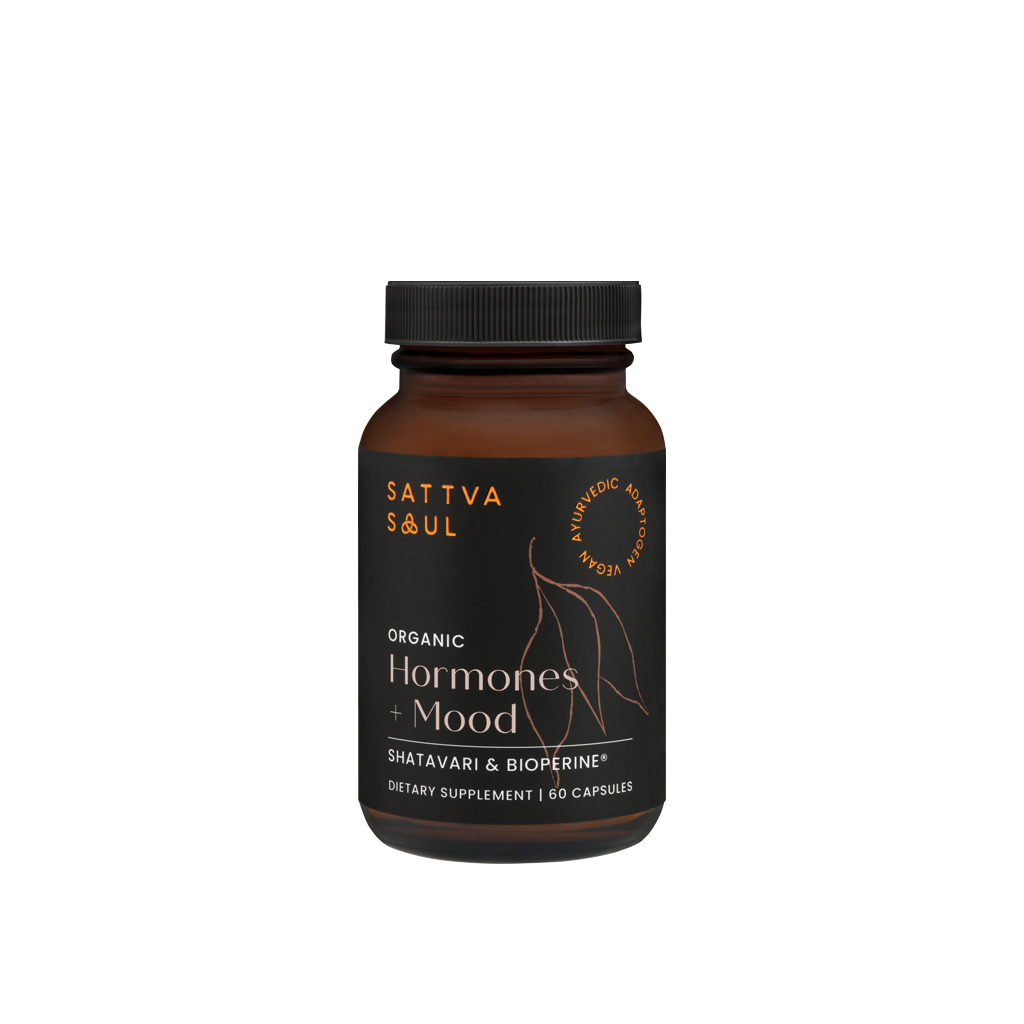
What is the menstrual cycle?
The menstrual cycle is a reflection of a woman’s underlying health and is now regarded by many practitioners as the “fifth vital sign”, alongside heart rate, temperature, blood pressure and respiratory rate. This cyclical change in hormone levels, controlled by various brain regions and glands in the body including the hypothalamus and pituitary gland, creates changes in the tissues of the reproductive organs, with the aim of preparing a woman’s body for the possibility of pregnancy.
Phases of the Menstrual Cycle
Throughout the roughly month-long menstrual cycle, there are a sequence of events associated with maturation of an egg, that can be divided into distinct phases. The two main phases of the menstrual cycle are the follicular phase and the luteal phase.
The follicular phase is the “pre-ovulatory” phase, which begins from the first day of menstruation until ovulation. During menstruation, oestrogen and progesterone levels are low, signalling to the pituitary gland to release follicle stimulating hormone (FSH). FSH stimulates the recruitment of a cohort of ovarian follicles for maturation in each ovary. One of these follicles becomes the dominant follicle, destined to burst open and release its egg during ovulation. The length of the follicular phase is variable, ranging between 7-21 days.
The luteal phase on the other hand, does not generally vary in length and is usually 14 days. This “post-ovulatory” phase extends from after ovulation until the next menstrual bleed. After ovulation, the remaining cells from the ruptured follicle in the ovary form a temporary endocrine organ called the Corpus Luteum, which is responsible for the production of progesterone and oestrogen throughout the luteal phase. If the egg is fertilised, it implants into the uterus, pregnancy commences and the Corpus Luteum stays on to produce hormones until the placenta takes over at 3 months. If fertilisation doesn’t occur, the Corpus Luteum stops secreting progesterone and degenerates after 10 days. Since progesterone is needed to maintain the endometrium, this lining is shed which is the menstrual bleed.
Ovulation and Charting
A menstrual cycle isn’t a menstrual cycle without ovulation. This mid-cycle event involves the release of a mature egg from the ovary and movement of the egg down the fallopian tube, where it may be fertilised. Knowing when ovulation happens is not only important as a fertility awareness method used for conceiving a child, but is a useful method of natural contraception.
One of the best ways to identify whether ovulation has happened is charting the menstrual cycle. All you need to chart your cycle is a basal body temperature thermometer, a paper chart or a charting app.
Temperature charting involves recording basal body temperature, which is the resting temperature recorded first thing in the morning upon rising, over the course of the cycle. A mid-cycle temperature rise of around 0.5 degrees Celsius indicates that ovulation has happened. This temperature rise occurs as a result of the production of the hormone progesterone by the corpus luteum. Whether the increase in temperature on ovulation is sustained over the luteal phase, indicates if sufficient progesterone is produced, which is not only essential for maintaining a healthy pregnancy but has a calming effect on the mind and is important for bone and cardiovascular health. Charting the changes in cervical mucous over the cycle adds an extra layer of valuable information, with an increase in amount if cervical mucous and a raw egg white consistency signalling the fertile window and ovulation approaching.
Menstrual Irregularities and their Common Causes
A healthy menstrual cycle is one that comes regularly and is anywhere between 21-35 days long. The menstrual phase of the cycle should be 2-7 days with no more than 80 mL of menstrual fluid loss and only mild discomfort. During the luteal phase leading up to menstruation, there may be some symptoms experienced, however severe PMS symptoms like pain and bloating, painful swollen breasts, fluid retention and fluctuations in mood are not normal. Any irregularity in the menstrual cycle signals that there may be hormonal imbalances or a gynaecological disease present. Modifiable factors like chronic stress, poor diet and nutrient deficiencies, high toxic burden, poor function of the elimination organs, certain medications and other lifestyle factors can play a part in menstrual irregularities.
- Chronic stress and the resultant increase in synthesis of stress hormone cortisol, leads to hormonal imbalances. This is due to cortisol production occurring down the same biochemical pathway as the sex hormones oestrogen and progesterone and the body prioritising cortisol production and “survival” over reproduction.
- Sex hormones are derived from cholesterol and require micronutrient cofactors like zinc, vitamins A, E, B3 and B12. A diet lacking in healthy fats and nutrient dense foods does not supply the precursors for sex hormone production.
- Endocrine disrupting chemicals (EDC’s) are a class of environmental toxins that mimic our sex hormones, contributing to hormonal imbalances. These include phthalates, parabens and BPA found in plastics, personal care products, air fresheners and perfumes.
- Poor function of the elimination pathways, the bowel in particular, contributes to hormone imbalances. If there is slow gut motility and constipation, hormone metabolites, especially oestrogen metabolites, destined for elimination via the bowel, may be deconjugated by gut bacteria and re-enter circulation.
- If heavy and painful menstrual bleeds are experienced each month, further investigation is warranted. There could be an underlying gynaecological condition such as endometriosis, uterine fibroids or adenomyosis that may be detected with a pelvic ultrasound or laparoscopic examination.

Is it really a period?
Not many people know that it’s possible to experience a bleed each month that resembles a period, without actually ovulating. These cycles without ovulation are called anovulatory cycles and women experience them for a range of different reasons including: recovery post-pill, polycystic ovarian syndrome, hypothalamic amenorrhea from undereating or overexercising, high prolactin levels or perimenopause. Since there is the absence of a luteal phase and no progesterone produced, fertility is compromised and the many benefits of progesterone are absent. Anovulatory cycles are often cycles that are shorter than 21 days or longer than 35 days and the bleed is normally longer than a normal period (>7 days). Another cause for cycles without ovulation is the oral contraceptive pill (OCP). The breakthrough bleed that occurs when taking the OCP, surprising to many women, is not an actual period! The synthetic hormones in the OCP actually suppress ovulation so when you’re on the OCP you do not have a menstrual cycle.
If you are experiencing menstrual irregularities such as severe PMS symptoms, PMDD, amenorrhea (absent periods), heavy and painful periods or have been diagnosed with a condition like endometriosis, PCOS, uterine fibroids or adenomyosis, there’s a lot that can be done with the support of an experienced natural health practitioner.
How to Re-balance your Cycle
- Adopt stress management techniques such as daily mindfulness, meditation, yoga, spending time in nature, exercise and journaling to alleviate stress and support healthy hormone balance.
- Reduce exposure to environmental toxins by opting for spray free or organic produce, filtering your water, using natural personal care products, avoiding plastic for storing food and instead using glass or stainless steel, using natural home cleaning products and stainless steel or cast-iron cookware.
- Drink 1.5-2 L filtered water and eat plenty of fibre rich fresh non-starchy vegetables to aid bowel function and the complete elimination of toxins and hormone metabolites.
- Eat an anti-inflammatory wholefoods diet like the Mediterranean diet, rich in fresh vegetables, fruit, quality meat and healthy fats in the form of nuts, seeds, avocado, fatty fish, and olive oil. These healthy fats provide cholesterol – the precursor for production of our sex hormones.
- Include cruciferous vegetables such as broccoli, cauliflower, collard greens, Brussel sprouts, cabbage and broccoli sprouts in the diet regularly. These vegetables contain glucosinolates, which are sulphur containing chemicals that are broken down in the body into compounds including Indole-3-carbinol (I3C), which activates detoxification enzymes that support the detoxification of oestrogen.







